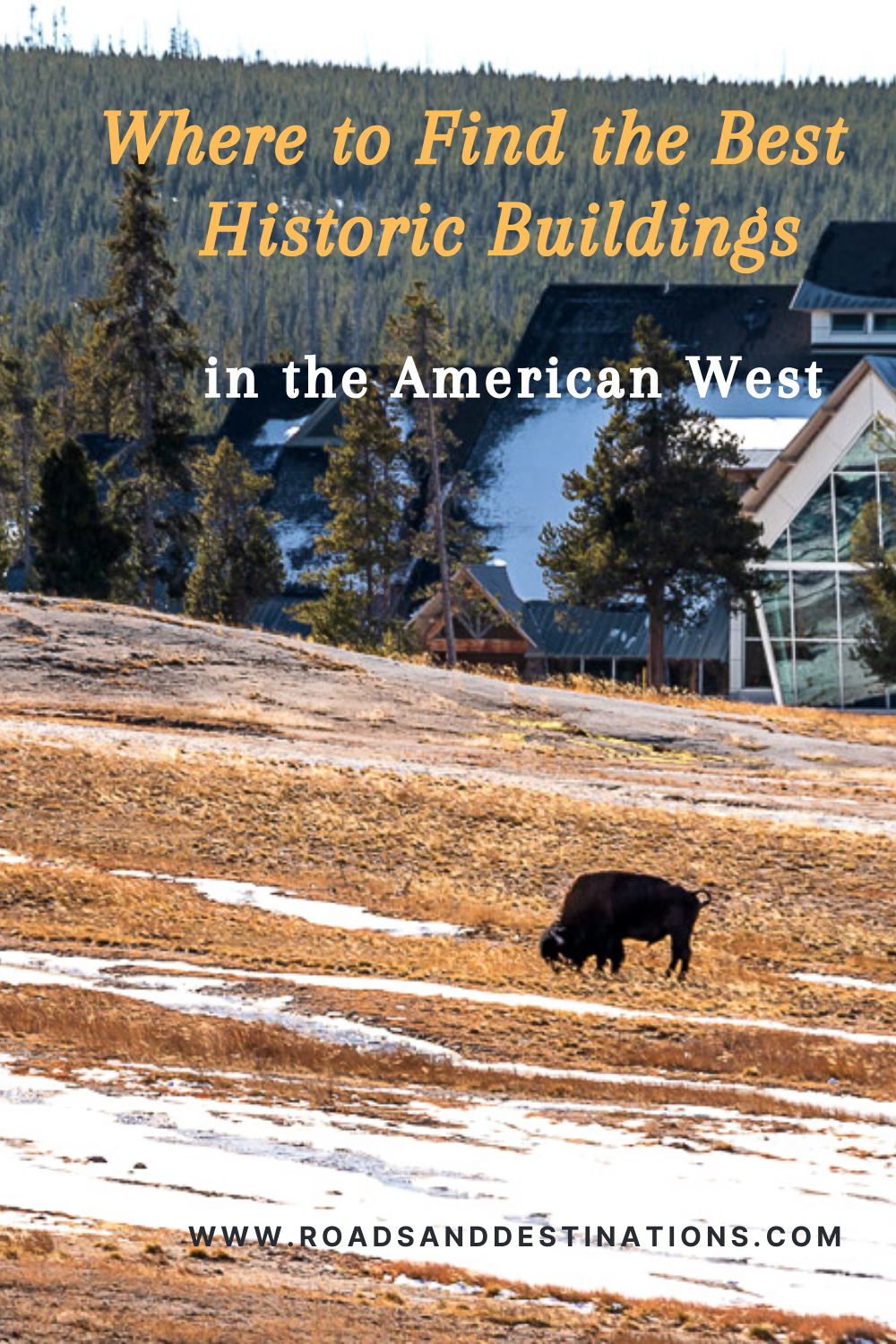The American West is brimmed with incredible historic buildings. From cave dwellings to old forts and castles, the western states preserve their rich and spectacular heritage through these historic structures.
Last updated: March 23, 2025
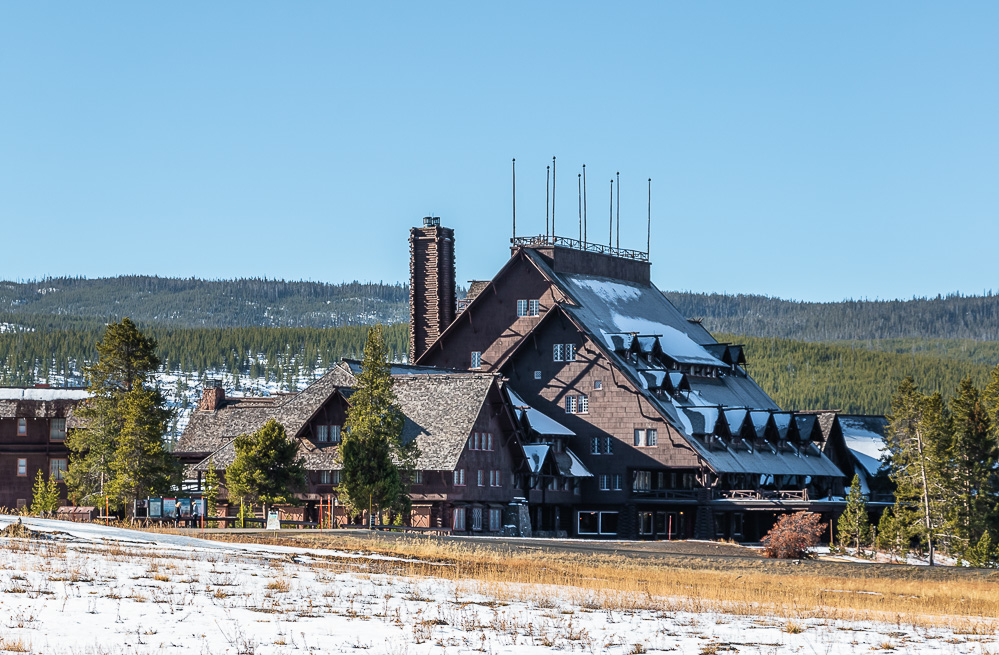
Top Historic Buildings in the American West
The American West is dotted with historical buildings. Important commercial or recreational facilities at that time, these structures have never been retired. Instead, they have embarked on a new journey of introducing their visitors to the rich and diverse history of the 13 western states of the U.S. The national historic landmarks have scattered over the once unoccupied territory.
The appearance of these historic buildings on the vast landscapes of the American West symbolized a new chapter in U.S. history. In fact, it is rightful to say that the birth of these historical buildings forever changed the norms of the West and the country. Soon other regions picked up the prevailing trend and adjusted to the new standards, gently imposed by these remarkable national historic landmarks.
You don’t have to be a history nerd to acknowledge the magnificence and historical importance of these old structures. Yet when time comes to impress your travel companions, share with them a few words about these famous and hidden historic structures in the American West.
READ MORE: Top 9 Cultural Destinations in the USA
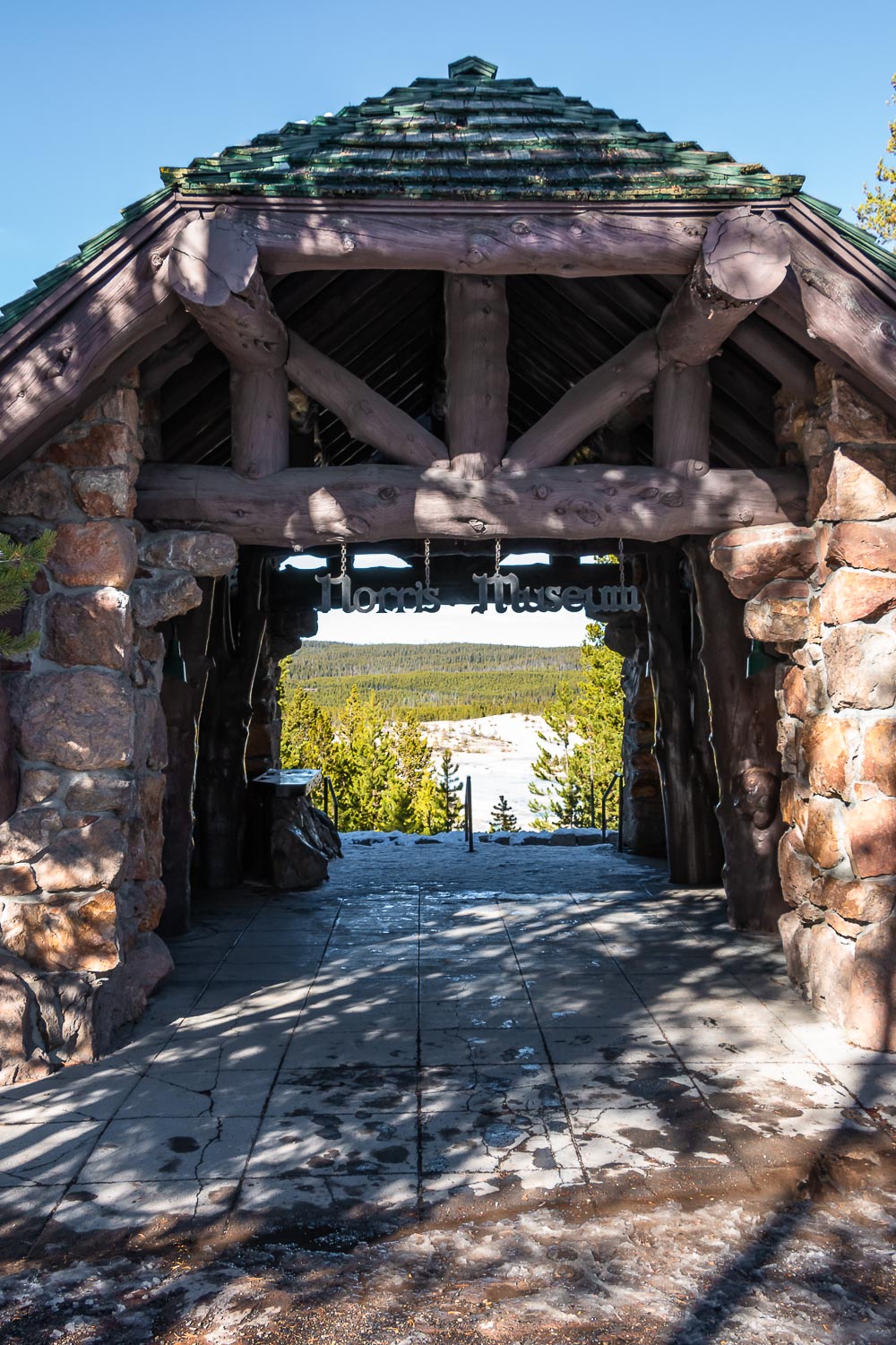
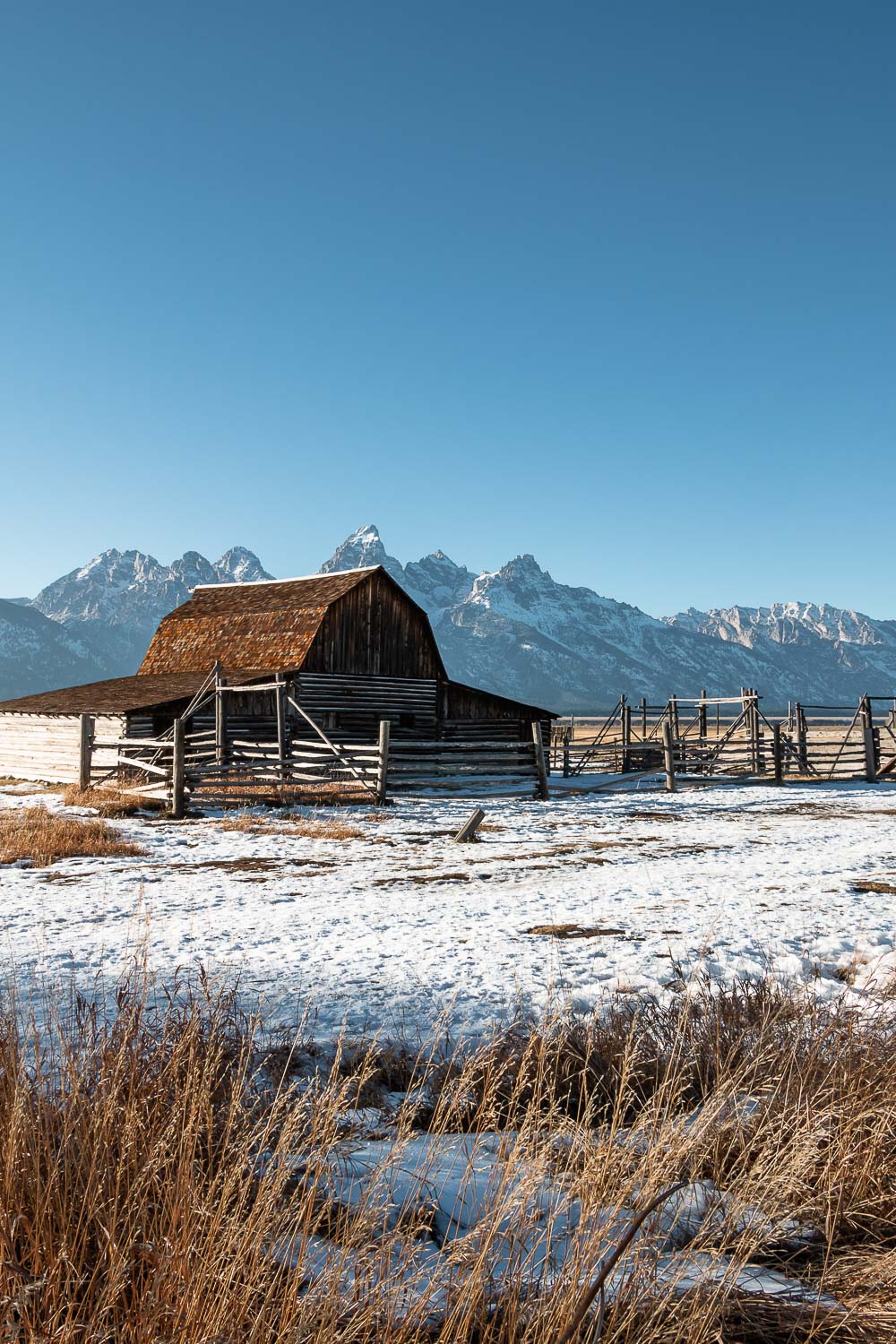
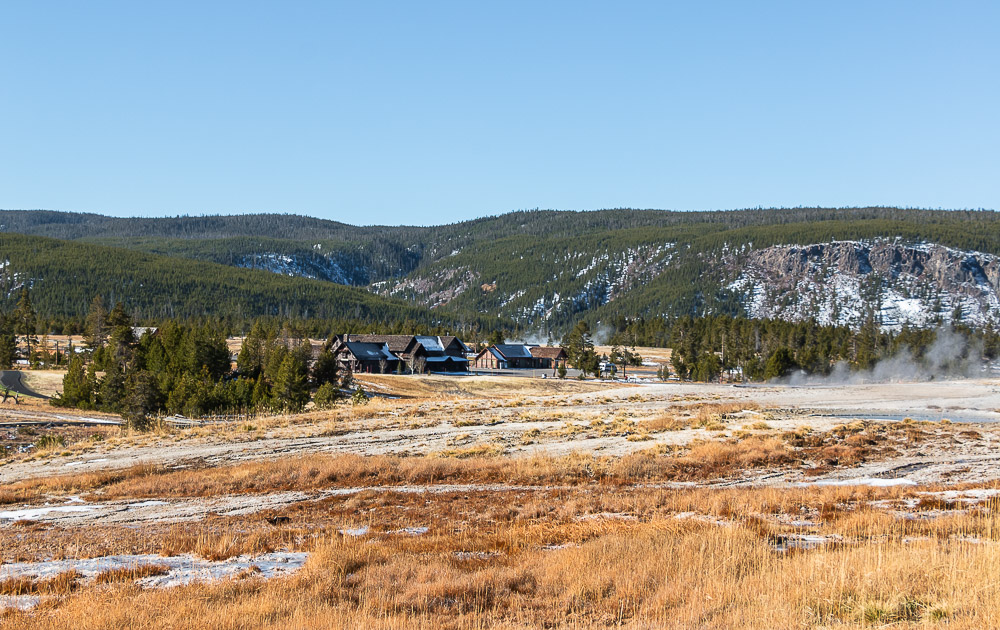
HISTORIC STRUCTURES IN THE AMERICAN WEST: WYOMING
1. Old Faithful Inn
Address: 3200 Old Faithful Inn Rd, Yellowstone National Park, WY 82190
Yellowstone National Park in northwestern Wyoming has many remarkable features to show to its guests. Home to such world-known phenomena as Old Faithful Geyser and Grand Prismatic Spring, it also boasts some of the most recognizable historic buildings in the American West. Among these prominent structures is the Old Faithful Inn.
Built in 1903-1904 with local logs, the historical hotel is the largest log hotel in the world. Considering its massive size and spectacular interior design, some people suggest that the Old Faithful Inn is the largest log building in the world.
Present-Day Old Faithful Inn
The 327-room lodge, sitting in front of Old Faithful Geyser, draws attention with its spacious lobby. The towering room of one of the most sought-after historic buildings in Yellowstone never ceases to show the opulence and lavish designing details that prevailed in the architectural style of the West at the beginning of the 20 century. The focal point of the Old Faithful Inn’s lobby is a massive 85-foot fireplace with a hand-crafted clock made of copper, wood, and wrought iron.
A fine example of the rustic resort architecture of the Golden Age, known as National Park Service rustic architecture, the Yellowstone’s famous lodge is one of a few historic log buildings that remained in the west of the country. When the hotel was first opened in 1904, astounding the world with electric lights and steam heat, it instantly became the greatest park lodge of the U.S.
In fact, even time didn’t dare to deprive the Old Faithful Inn of this title. Over a hundred years later, one of the park’s largest historic buildings still intrigues the visitors of the American West with its massive size and splendid architectural details. In 1987, the Inn was listed as a National Historic Landmark. Today, it is also a part of the Old Faithful Historic District.
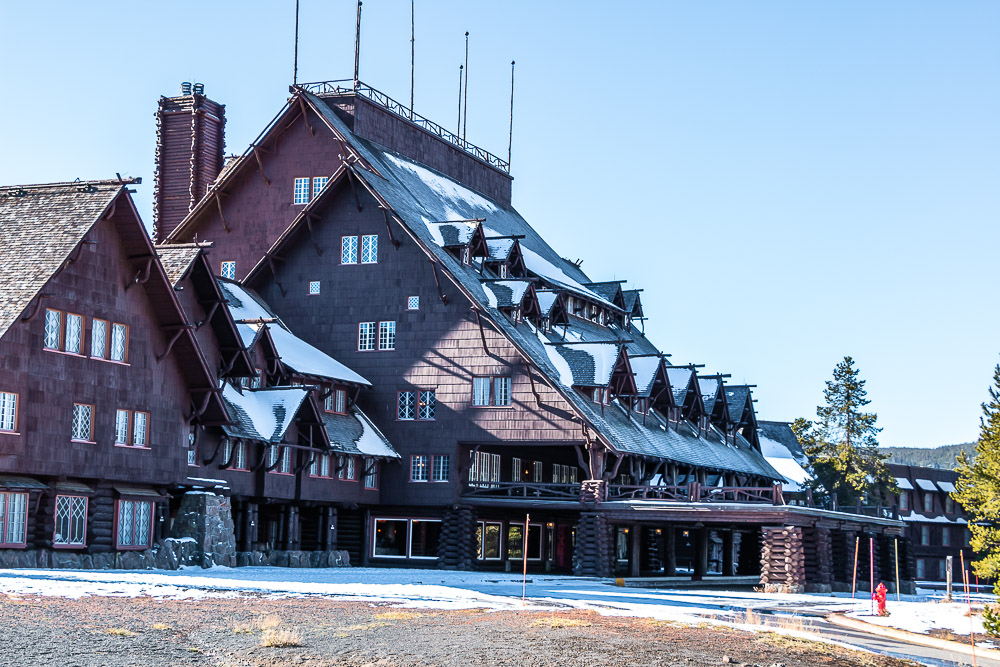
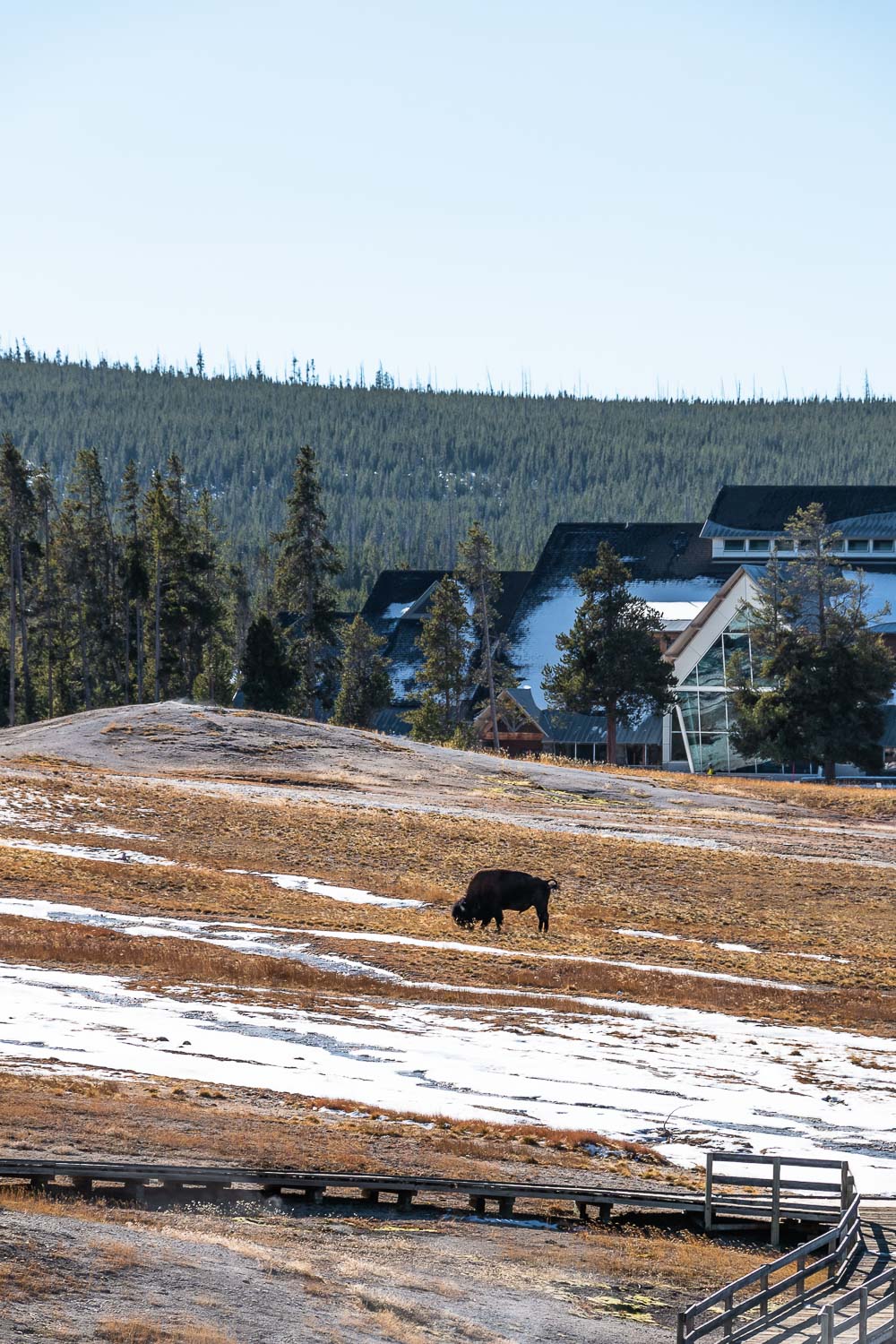
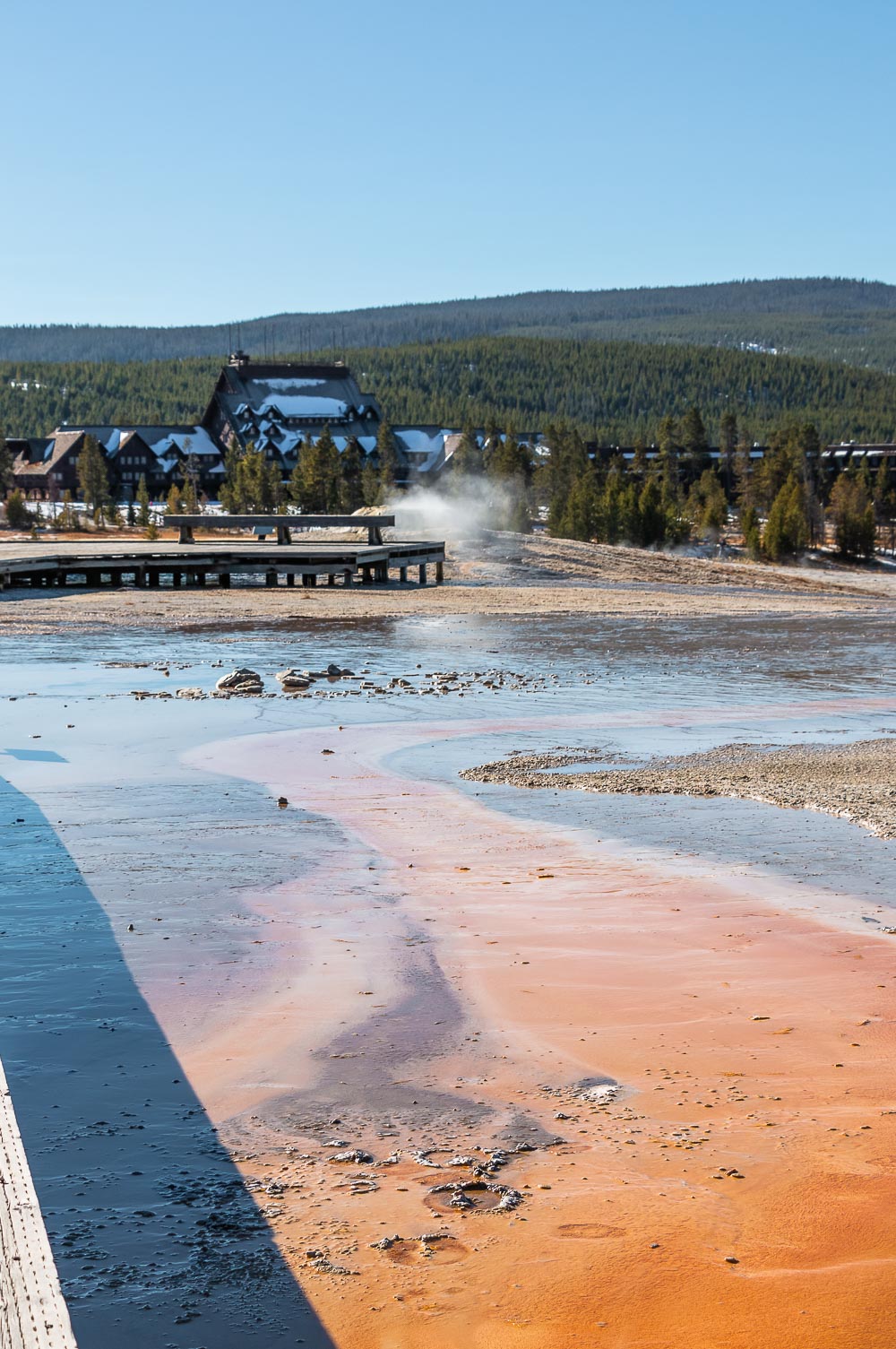
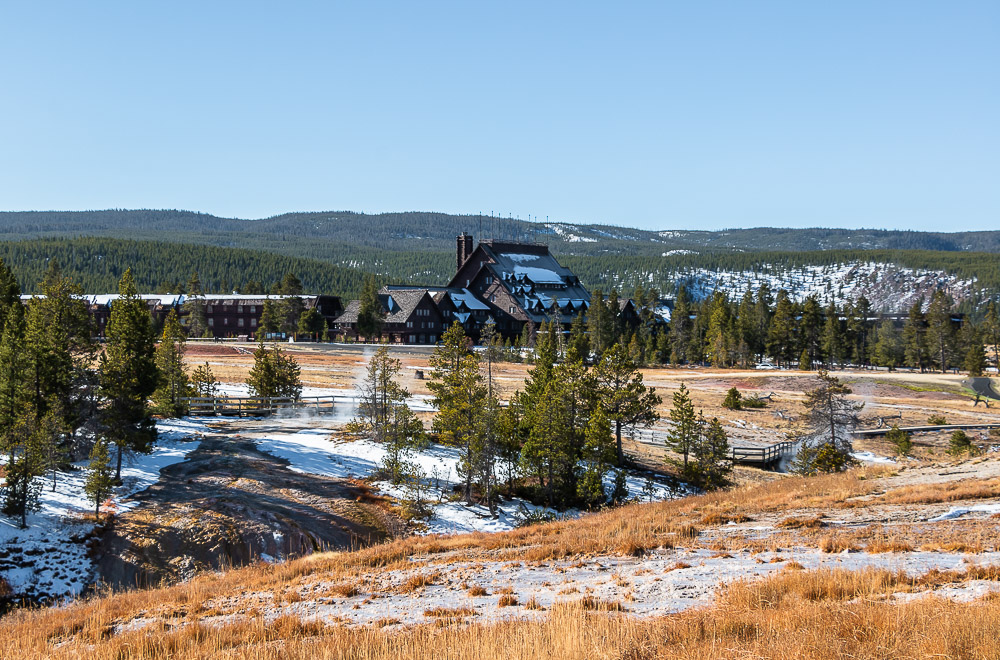
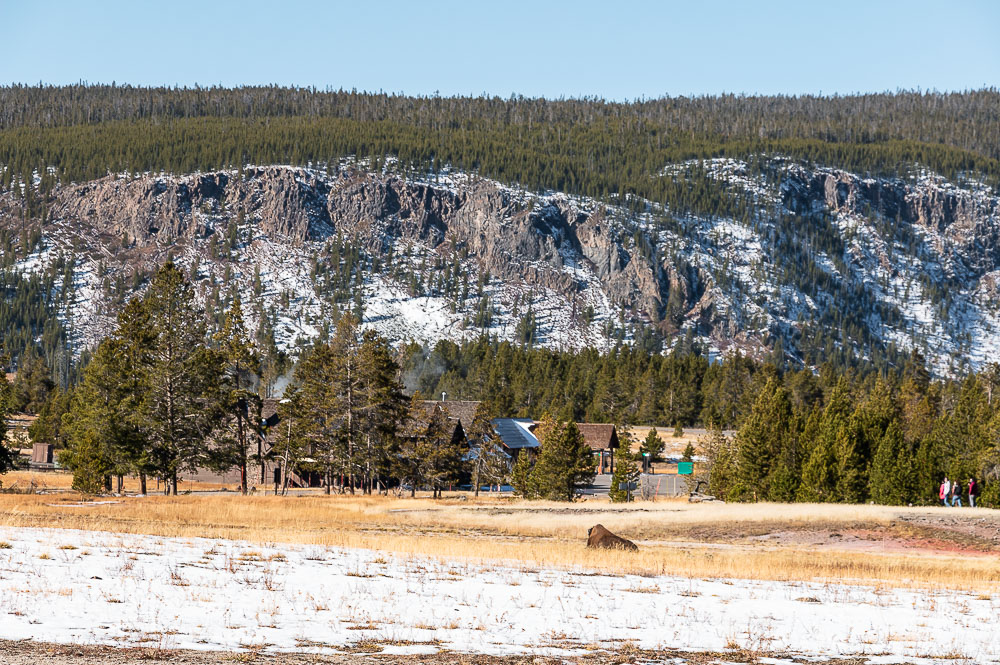
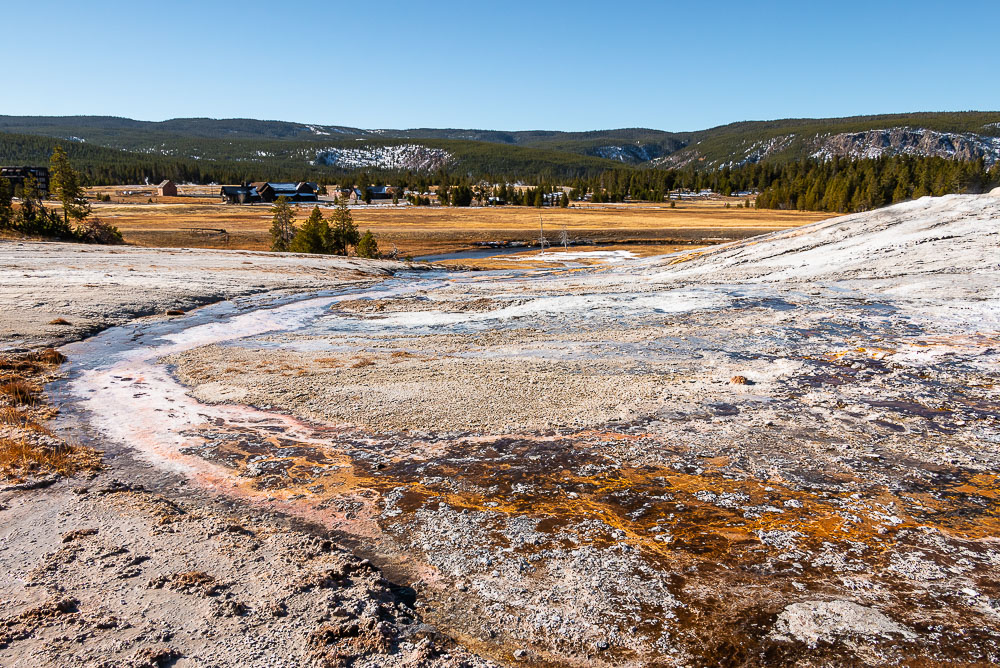
2. Historic Fort Yellowstone
Address: 2 Barracks St, Yellowstone National Park, WY 82190
A symbol of the tumultuous history of national parks in the west of the U.S., Fort Yellowstone is a complex of historic buildings nestled in the Mammoth Hot Springs Historic District. Up to this day, these 35 structures from 1890 and early 1900s unveil the long and difficult history of the establishment of America’s first national park.
After the creation of Yellowstone National Park in 1872, local developers and hunters still continued their destroying activities. Despite the alarming calls from locals, striving to preserve the unique beauty of the area, legislators refused to assign and financially support the park’s administration. The Army, however, didn’t look down at the issue and set out to protect Yellowstone for the next 32 years.
Architectural Past of Historic Fort Yellowstone
With the arrival of the soldiers, the West didn’t see the rapid development of the military historic buildings. It took years until the first permanent structures appeared on Yellowstone’s ground. As a matter of fact, for 5 years, the soldiers lived in temporary old buildings at Camp Sheridan near the Mammoth Hot Springs Terraces. Finally in 1890, congress allocated $50,000 for a permanent post. The military settlement soon became known as Fort Yellowstone, one of the most remarkable historical buildings in the American West.
Back then, a number of old structures encompassed the historic landmark. The first building that was finished in 1891 included two duplex officer’s quarters, a barrack, and a few other structures. Almost an identical set of the historic buildings joined the growing fortress in the American West in 1897. More structures expanded the territory of Fort Yellowstone in 1909, defining its architectural style as the Colonial Revival style.
Today, the fortress is one of the most significant historic buildings that relate the long story of protection and survival of the national parks in the West. Fort Yellowstone was designated a National Historic Landmark on July 31, 2003.
3. Norris Geyser Basin Museum
Address: Yellowstone National Park, WY 82190
The Norris Geyser Basin Museum, better known as the Norris Museum, opened another page in the history of Yellowstone National Park. One of the smallest historic buildings in the American West, the structure was built in 1930. Originally, it functioned as a “trailside museum” for visitors to learn about history and hydrothermal features of Yellowstone on their own.
After automobiles replaced old-fashioned stagecoaches, the necessity of hiring a park guide faded. More people started traversing to historic Yellowstone on their own. The trailside museums came in handy to tell the visitors everything they otherwise would have learned from the guides.
The growing interest in such museums couldn’t escape the attention of Yellowstone National Park. Thus, a few other historic buildings of such significance quickly joined one of the most famous parks in the American West.
Similar to some other historical landmarks, the Norris Museum adopted the National Park Service rustic style. The old structure boasts an open foyer that runs through the middle of the museum. This opening serves as the entrance to the Norris Geyser Basin, the oldest, hottest, and most dynamic place in Yellowstone.
Additionally, two historic rooms on either side of the foyer present multiple exhibits that tell their visitors about the astounding history and features of the basin. The rustic Norris Geyser Basin Museum became a National Historic Landmark in 1982.
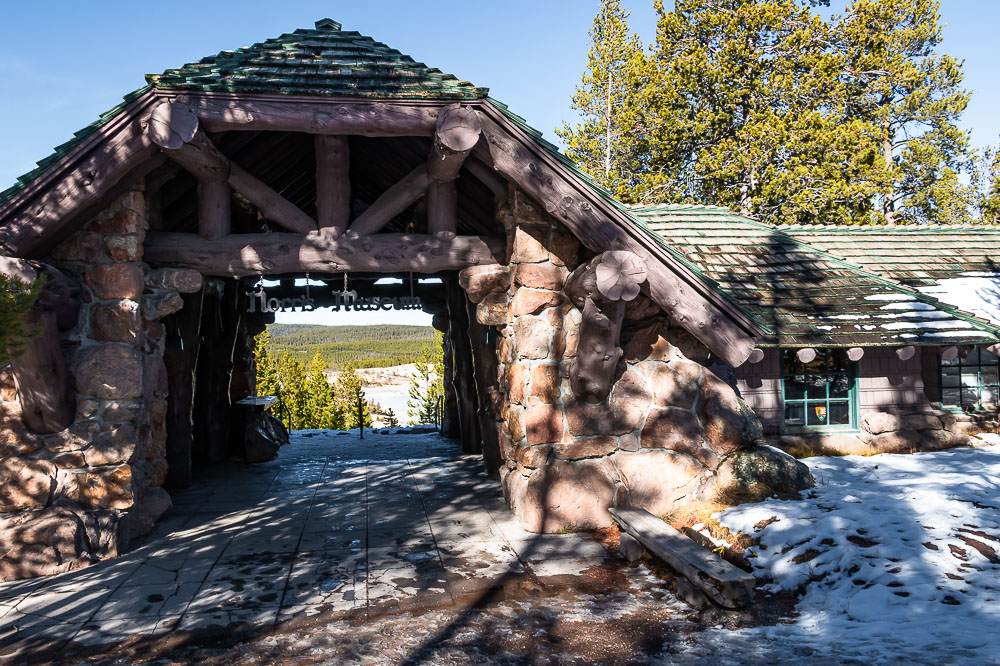
4. The T.A. Moulton Barn
Address: 13040 Antelope Flats Rd, Moose, WY 83012
Nestled near Yellowstone National Park, Grand Teton National Park is famous for spectacular views of the sawtooth Teton mountains and some of the most recognizable historic buildings in the American West. The latter comes into perspective when you visit historic barns within the Mormon Row Historic District.
The place includes remains of six old structures with the T.A. Moulton Barn being one of the most recognizable of them. The barn is one of the buildings that belonged to Thomas Alma Moulton, a pioneer who settled in the West at the end of the 19th century.
One of the most photographed historic buildings in America, the structure sits west of the Mormon Row road. Even though the old place is unoccupied now, its spectacular location with the majestic Teton mountains never ceases to impress.
It took Moulton and his sons over thirty years (from 1912 to 1945) to construct the historic homestead. The time, however, didn’t show mercy to their hard work. It ruined all other structures, somehow sparing only the T.A. Moulton Barn. The surviving property, though, became one of the most recognizable historic buildings in the West.
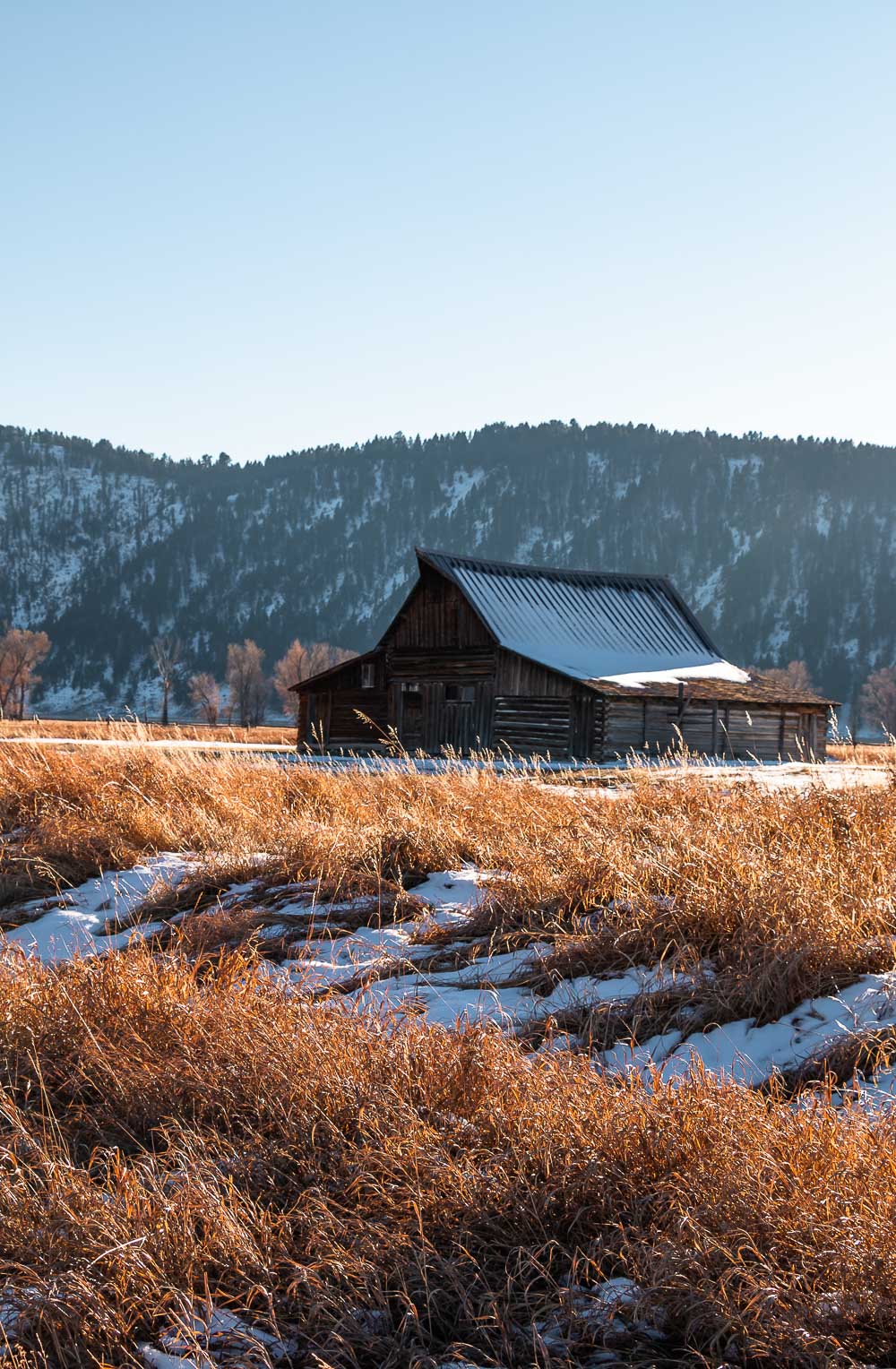
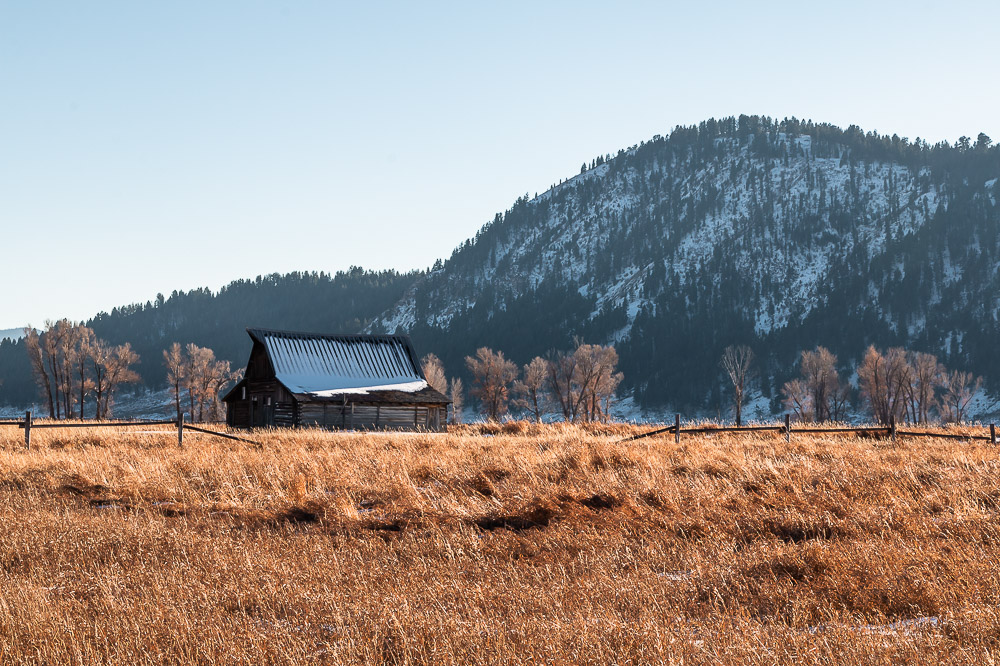
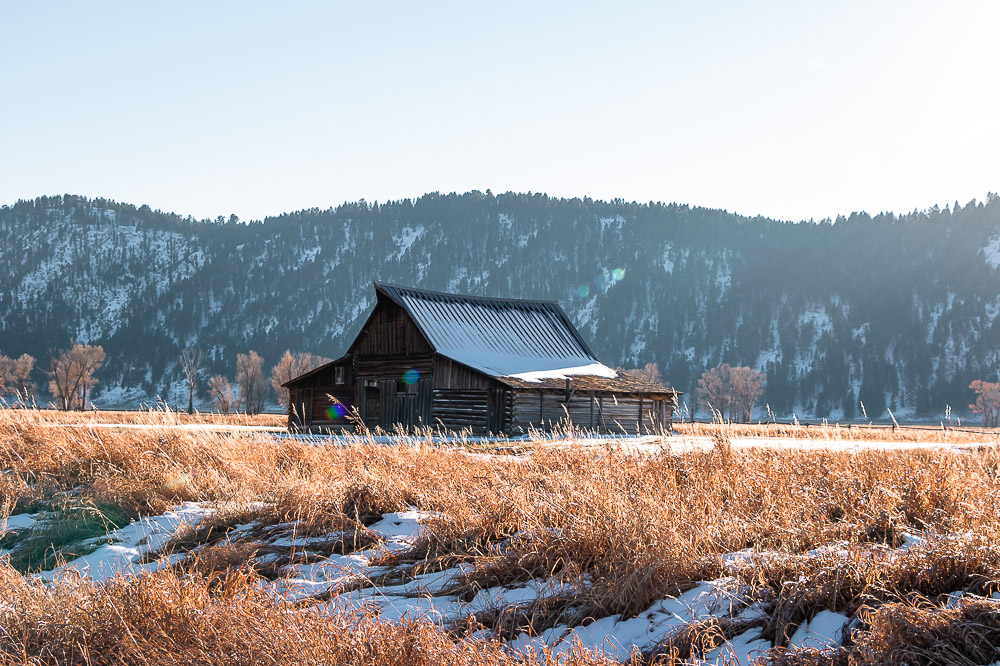
5. The John Moulton Barn
Address: 13040 Antelope Flats Rd, Moose, WY 83012
Family luck? You can say so, but the truth speaks louder than the words. The second popular structure among the remaining historic buildings in this part of the American West belonged to Thomas Alma’s brother, John Moulton. The latter arrived here in 1907 and established his homestead north of his brother’s. Unlike Thomas Alma’s property, a few other buildings survived from the historic John and Bartha Mouton homestead. So, next to the century-old barn, you can find the Pink House, the newest addition to the estate.
The time, however, was not the only culprit in the devastating history of the Mormon Row Historic District. After the establishment of Grand Teton National Park, people started fleeing Mormon Row. John Moulton never left his old property. And yet, he didn’t escape the financial hardship that came with the creation of the park. Therefore, John sold this historic land to Grand Teton National Park with a life lease in 1953. The pioneer continued to live on the property until 1990 when he died at the age of 103.
Finally in 1997, the two famous barns of the American West and the remaining four historic buildings were added to the National Register of Historic Places as the Mormon Row Historic District.
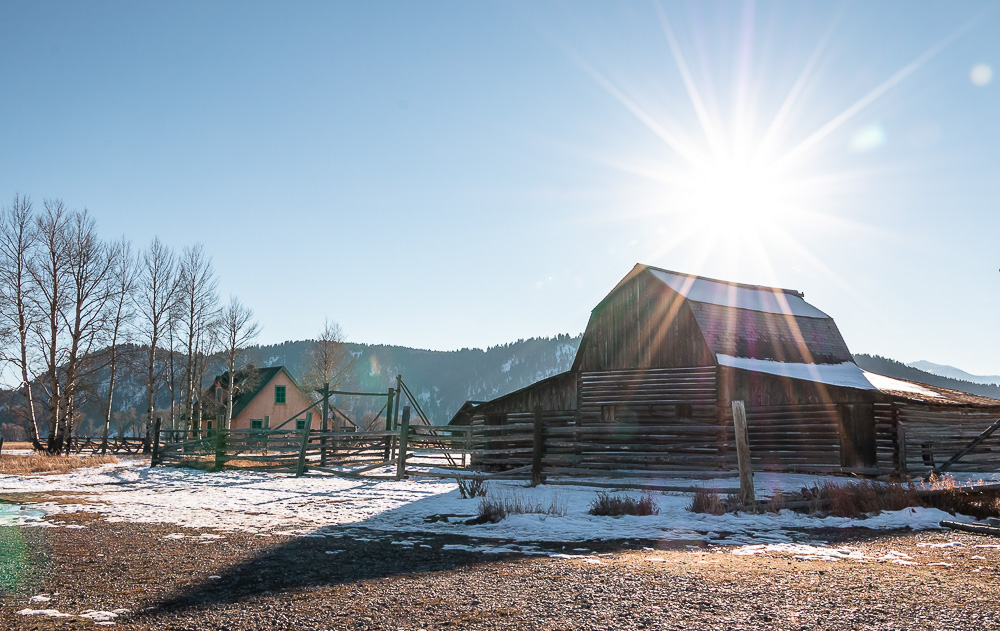

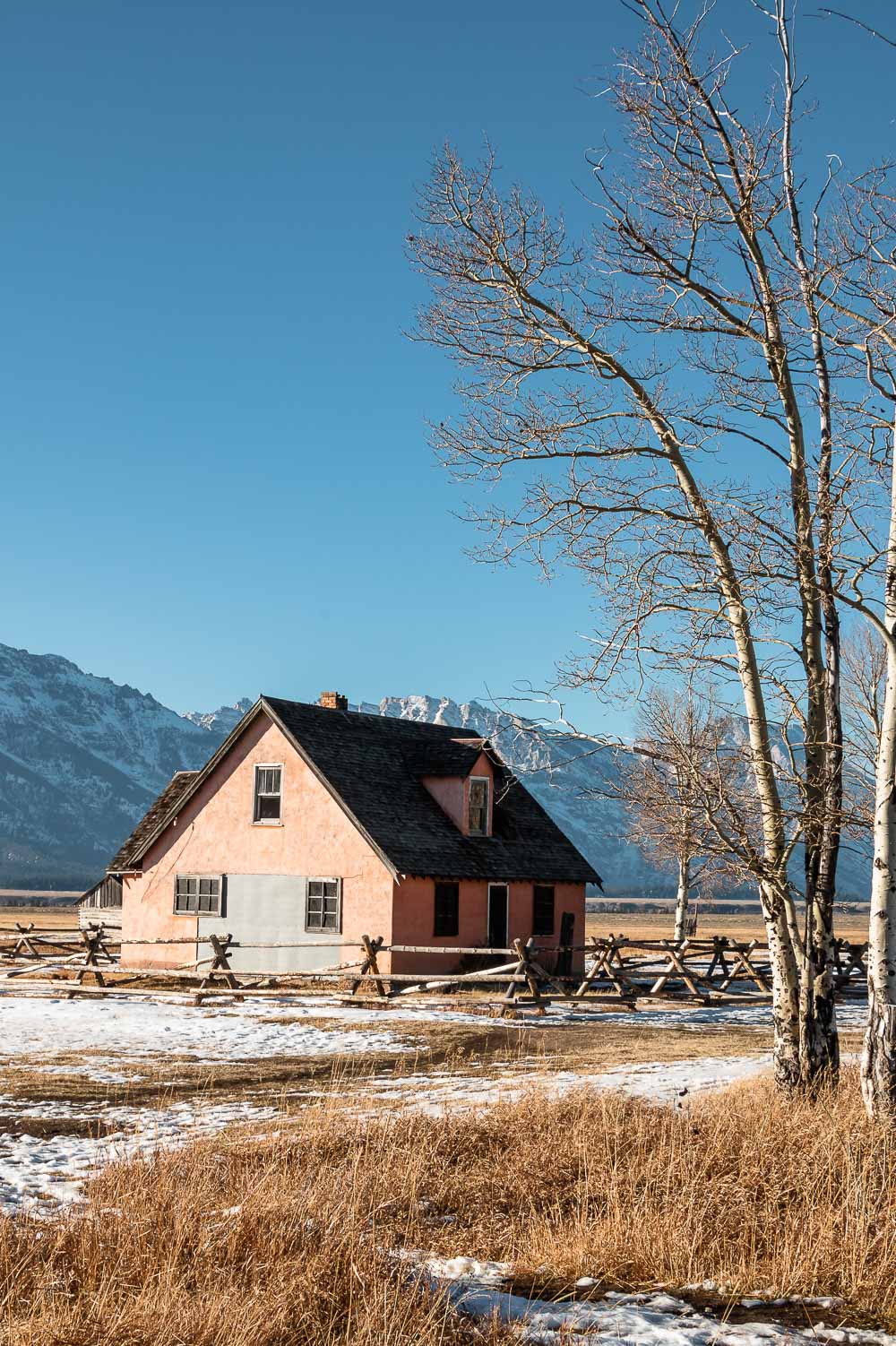
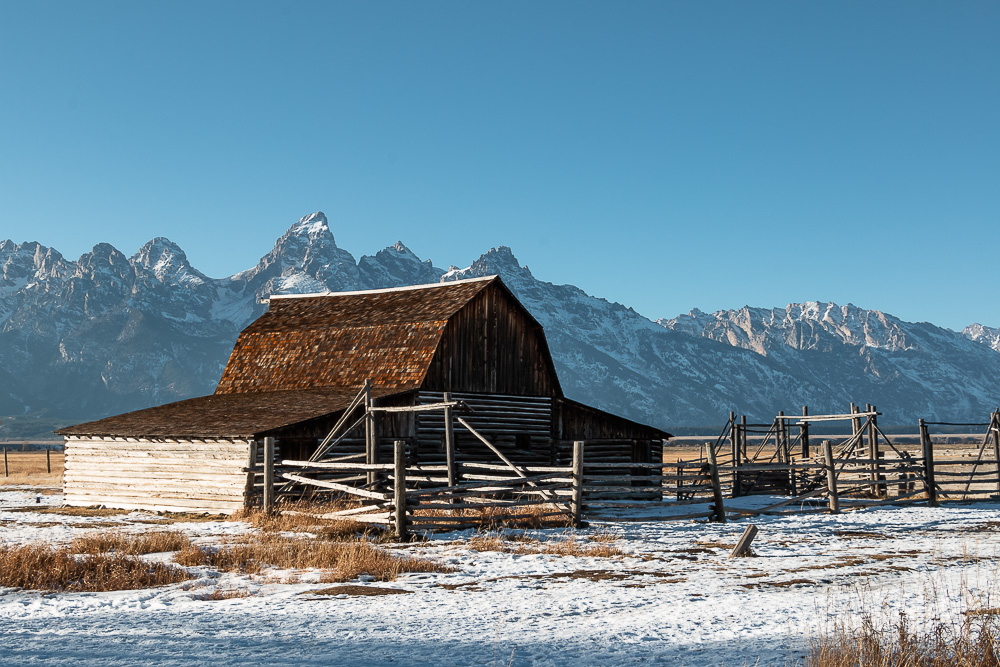
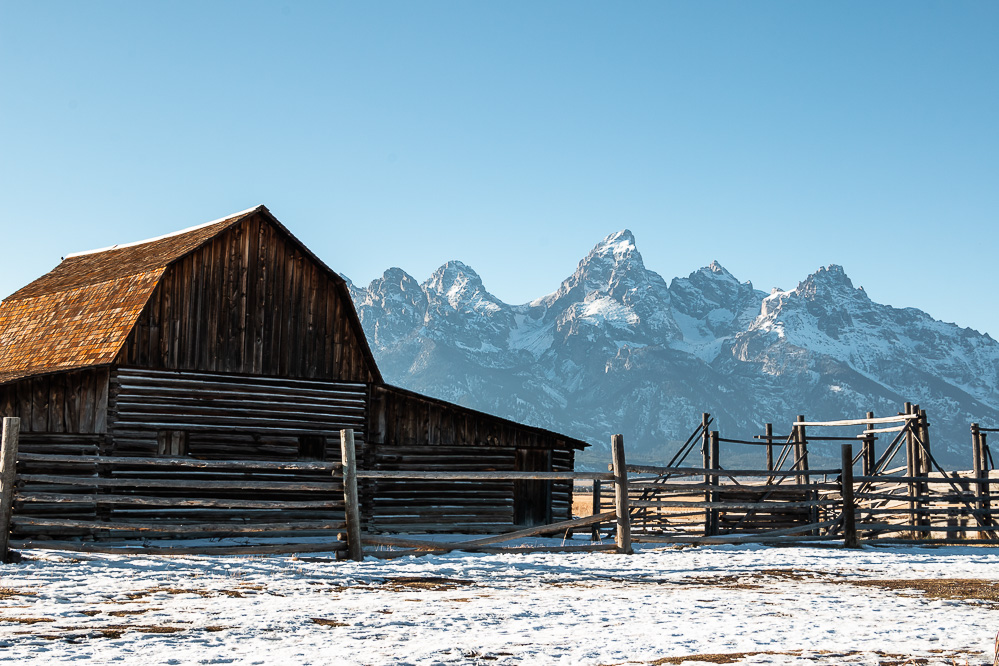
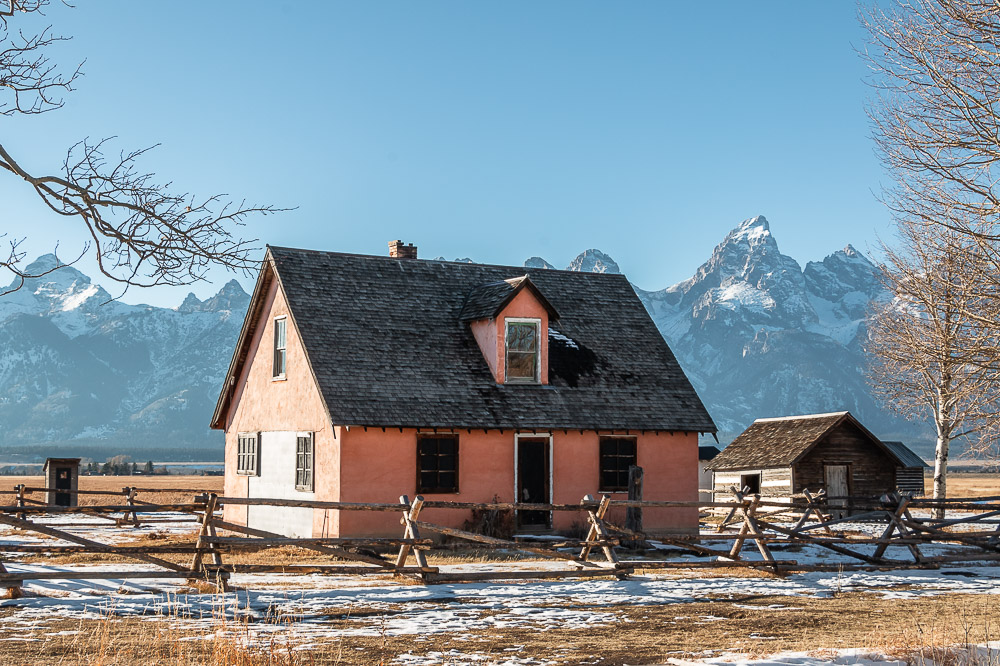
HISTORIC STRUCTURES IN THE AMERICAN WEST: MONTANA
6. Many Glacier Hotel
Address: 1 Rte 3, Babb, MT 59411
One of the most significant historic buildings in the western state of Montana is set on Swiftcurrent Lake in Glacier National Park. Sheltered by Mount Grinnell, the 215-room Many Glacier Hotel is the largest and most stunning old hotel in Glacier National Park. The construction of this historic landmark started in 1914. Just a year later, on July 4, 1915, the Swiss-style lodge rose to its full glory. Quickly after its opening, the historic hotel became known as the “Gem of the West” and later as one of the most prominent buildings in the country.
The Many Glacier Hotel was a manifestation of a bold dream of Louis W. Hill, president of the Great Northern railway. Mr. Hill envisioned a luxurious resort to promote the area as the “American Alps”. The historic 76-acres hotel was modeled after a Swiss chalet. It boasts a towering lobby, central stone fireplace, and a lake beach with docks.
In 1987, the mountain chalet got its deserved spot among National Historic Landmarks of the U.S. But less than a decade later, in 1996, the National Trust for Historic Preservation added it on its annual list of America’s 11 Most Endangered Historic Places. However, the stunning landmark endures. Moreover in 2016, it underwent a partial renovation without losing its unique Switzerland-inspired themes. Today, it rightfully belongs to the most extravagant historic buildings in the American West.
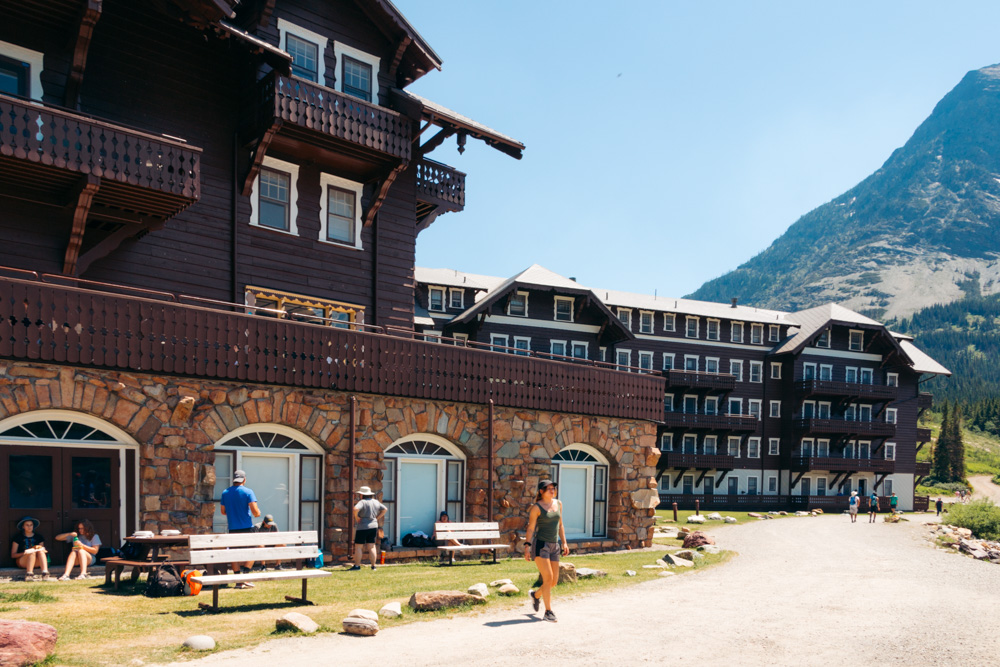
HISTORIC BUILDINGS IN THE AMERICAN WEST: CALIFORNIA
7. Giant Forest Museum
Address: 47050 Generals Hwy, Three Rivers, CA 93271
Set in the heart of Sequoia National Park, the historic Giant Forest Museum is a sight to behold. A huge rustic structure surrounded by some of the tallest trees in the state bewilders at once. Small and mysterious from a distance, one of the famous historic buildings in the West astounds with its size up-close.
The famous historical site came to life in 1928 under guidance of renowned architect Gilbert Stanley Underwood. For almost seventy years, the old wooden structure served as Sequoia National Park’s original market. At the end of the 20th century, the building, however, changed its functions. As a new addition to the National Register of Historic Places, it ceased its former duties and started its conversion to a museum. The renovation of this historical landmark was completed in summer 2001.
Today, the Giant Forest Museum is one of the highlights of Sequoia National Park. Furthermore, one of the busiest historic buildings in the West, it allows you to learn history and ecology of the giant sequoia forest. The site has many educational exhibits as well as interpretive trails around it. Additionally, the area near the historic Giant Forest Museum marks the start of exciting adventures to such landmarks as Sunset Rock, Battle Rock, and Moro Rock.
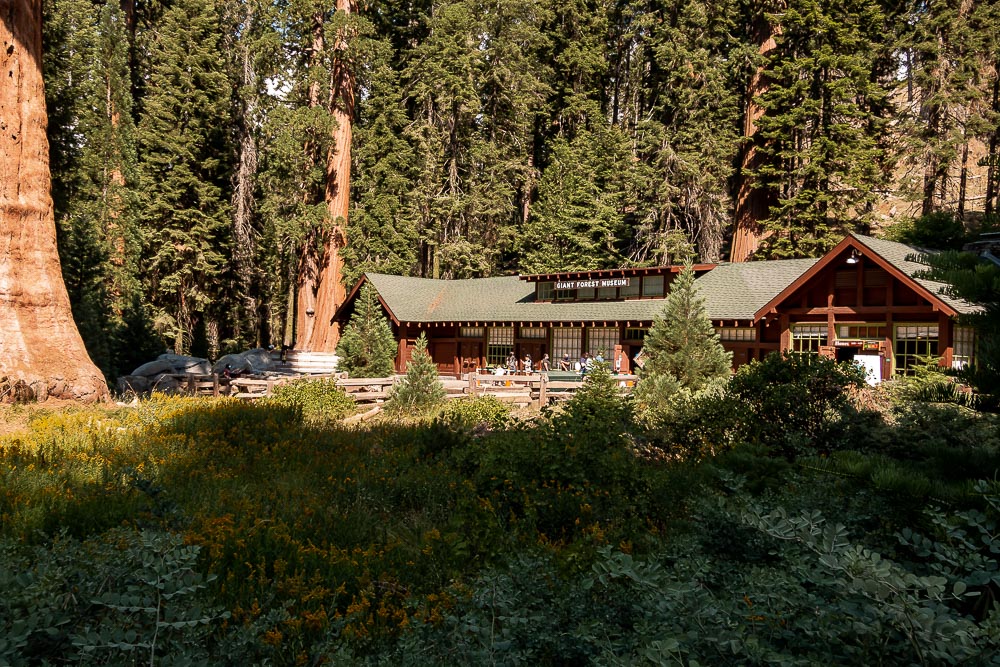
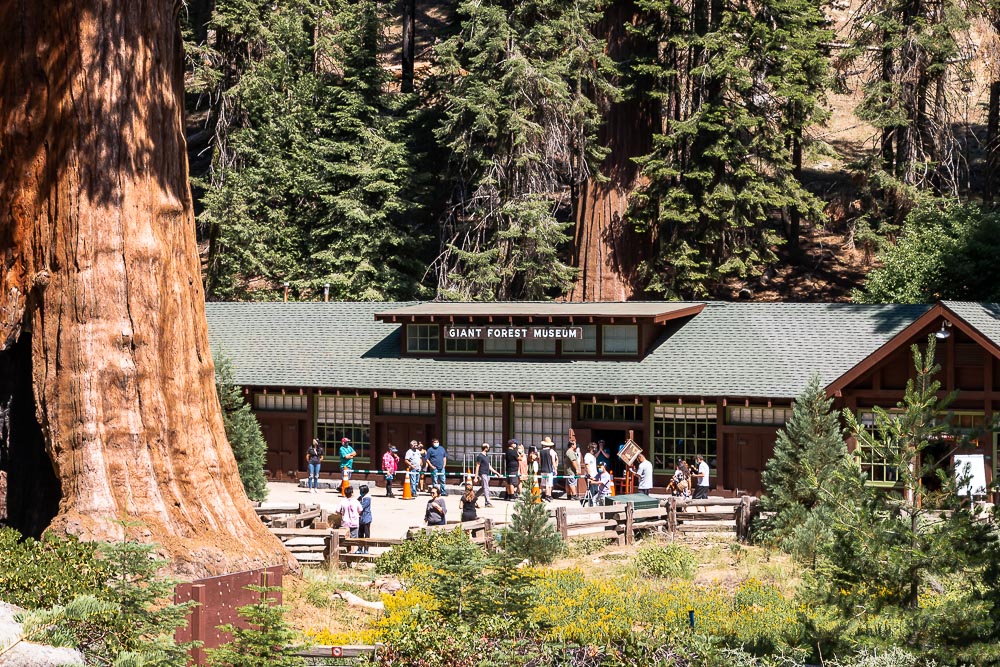
8. Hearst Castle
Address: 750 Hearst Castle Rd, San Simeon, CA 93452
Hearst Castle is one of the most opulent historic buildings in the American West. The finest product of its owner, William Randolph Hearts, and his architect, Julia Morgan, the extravagant national landmark is perched on a hill overlooking the town of San Simeon.
At the beginning of the 20th century, the publishing tycoon got the idea of building something bigger than his ancient camping tents. According to the Hearst Castle’s owner, he was getting too old for this type of adventure and preferred something more comfortable and stylish.
And the historic structure that shortly adorned the hill was surely one of the most comfortable buildings in the area and entire American West. Known as “La Cuesta Encantada” (The Enchanted Hill), the lavish castle became the highlight and the main gathering place of the celebrities and prominent people of the Roaring Twenties and 1930s.
Charlie Caplin, Gary Grand, Mary Pickford, Greta Garbo, Jean Harlow, and Clark Gable frequented the historical mansion and extravagant parties that Hearst liked to host. Occasionally, Wilson Churchill and Bernard Show dissolved the Hollywood vibes with their practical worldviews.
Extravagant Past of Hearst Castle
Parties were never ending at historic Hearst Castle, and so was its construction. One of the most expensive at the time historic buildings in the West, the mansion carried on its improvement and renovation from 1919 until 1947. While Hearst was entertaining his guests, Morgan was building and designing.
Hearst Castle has been making headlines ever since it rose on the hill near San Simeon. A new level of popularity hit the finest example of the priciest historic buildings of the West in 1941. While some Hollywood celebrities were eager to join the famous parties, others satirized the extravaganza and glamorous lifestyle of William Hearst.
So, Orson Welles’s newest movie, Citizen Kane, didn’t approve of such foolish waste of resources and money. Consequently, the movie didn’t get a round of applause from the owner of the most recognizable historic building in the west of the country.
No one knows the exact cost of a historical building of such size and magnificence. Some experts estimate that the construction and furnishing of the grandiose castle at the time of its glory was near $10,000,000.
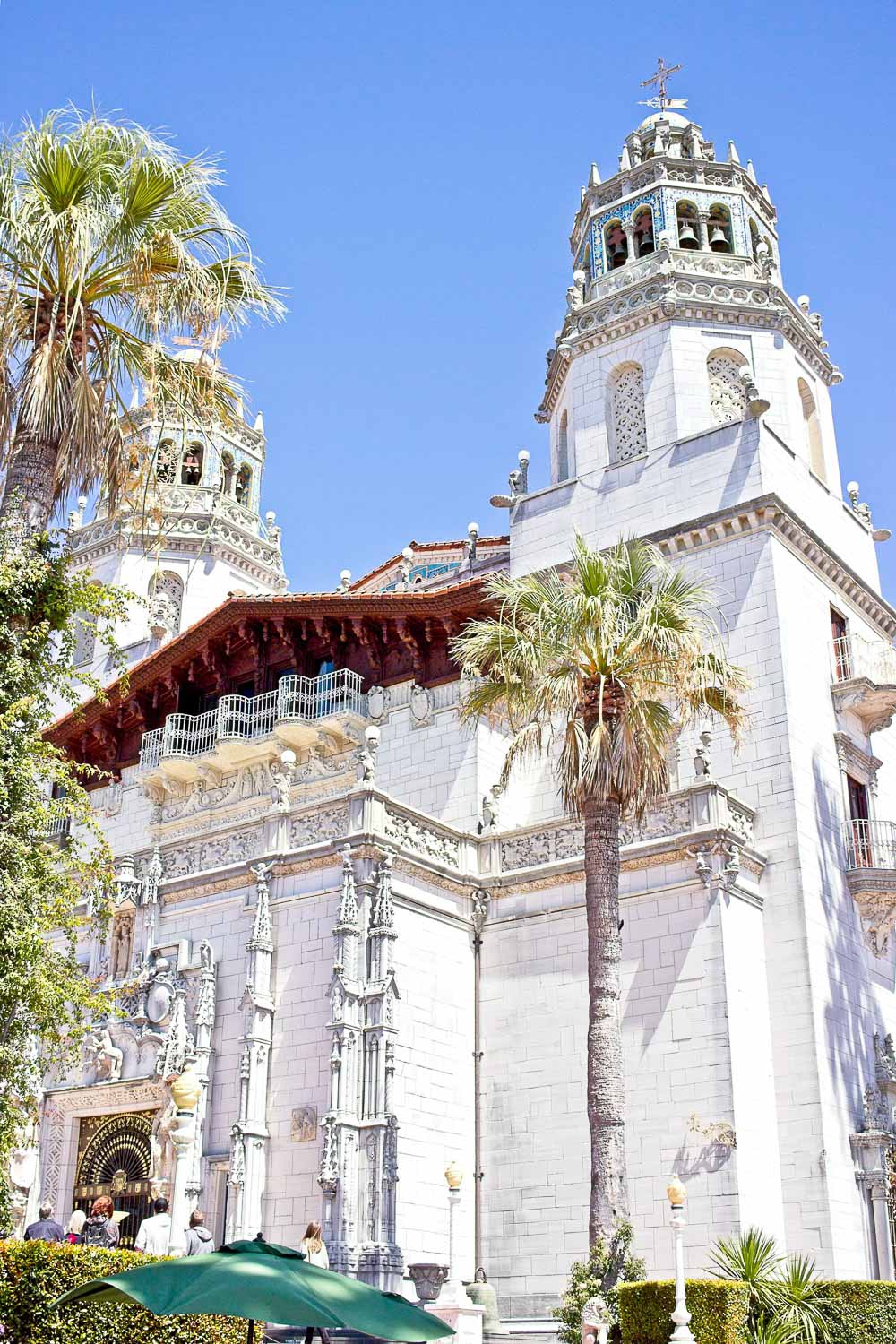
One of the Most Unprecedented Historic Buildings in the American West Today
Overall, the mansion boasts 42 bedrooms, 61 bathrooms, 19 sitting rooms, 127 acres of gardens, indoor and outdoor swimming pools, and some other entertaining and sport facilities. The historic castle is also known as one of a few rare buildings in the American West that once enclosed the largest private zoo.
After Hearst died in 1947, his family gave the complex and many of its valued relics to the State of California. The historic structure like no other buildings in the western states of the U.S. has since operated as the Hearts San Simeon State Historical Monument. The castle opened its doors for the public for the first time in June 1958. On May 11, 1976, it became a United States National Historic Landmark.
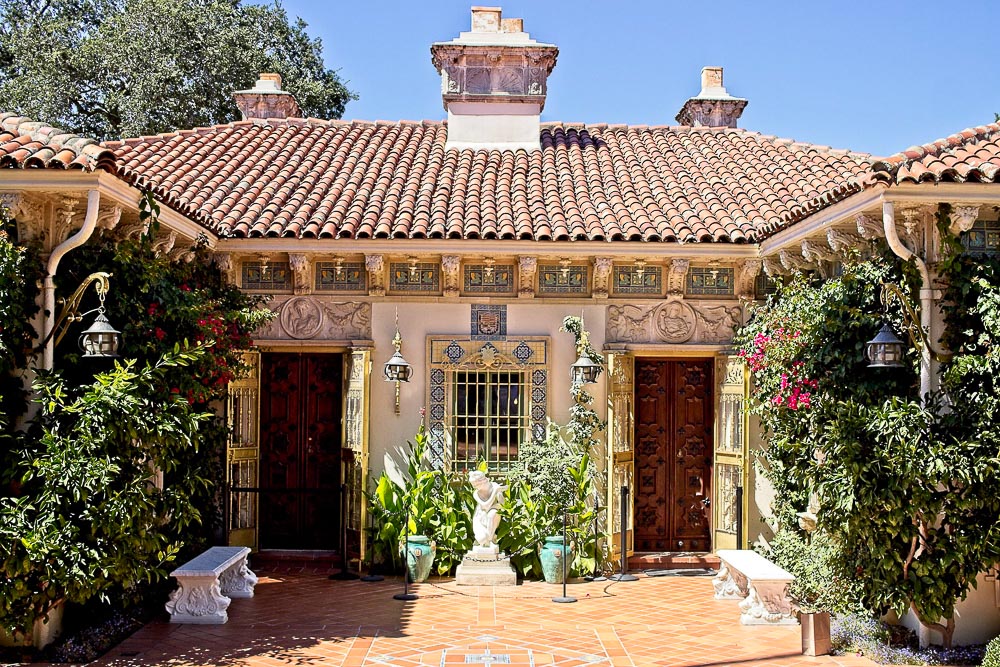
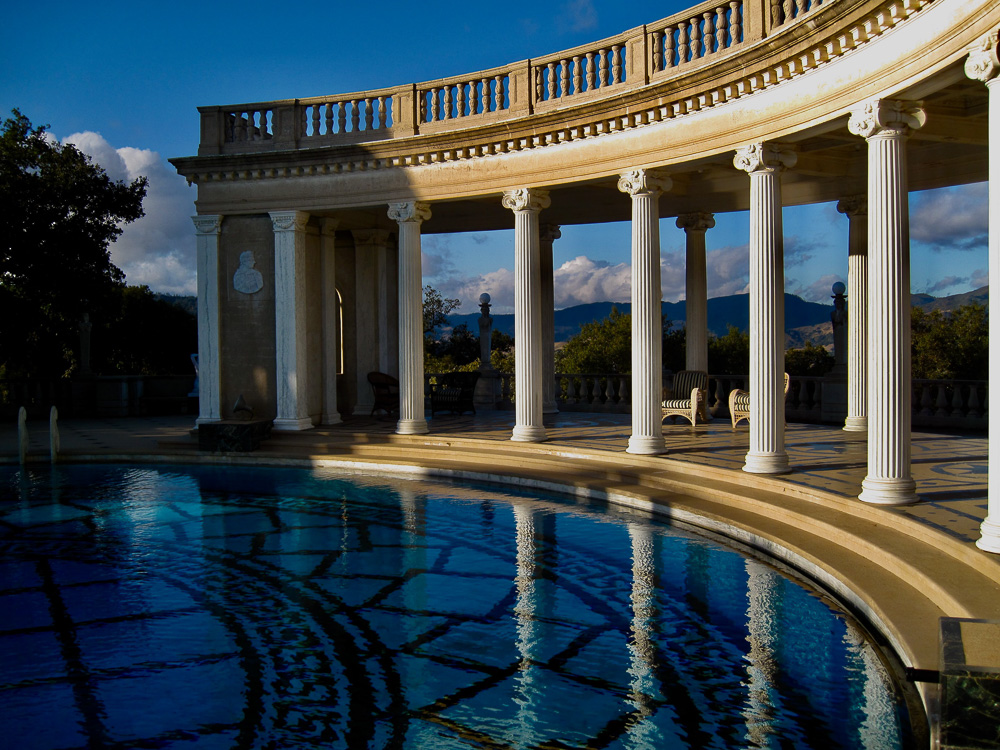
9. Bradbury Building
Address: 304 S Broadway, Los Angeles, CA 90013
Los Angeles has its own collection of historic buildings that has defeated the merciless time and ever-changing architectural styles of the American West. Bradbury Building, a five-story office structure in downtown LA, is undoubtedly one of the greatest landmarks in the city.
Commissioned by Los Angeles gold-mining millionaire Lewis L. Bradbury, the historic structure joined the family of the working buildings in the American West in 1893. It is famous for its stylish atrium with access to walkways and stairs. A central court along with Italian marble, Mexican tile, and decorative terra cotta further contribute to the remarkable architectural style of this western historical structure.
Still a functional complex, the building got the attention of the National Register of Historic Places in 1971. Six years later, it became a National Historic Landmark.
READ MORE: Top 11 Historic Sites and Venues in Los Angeles
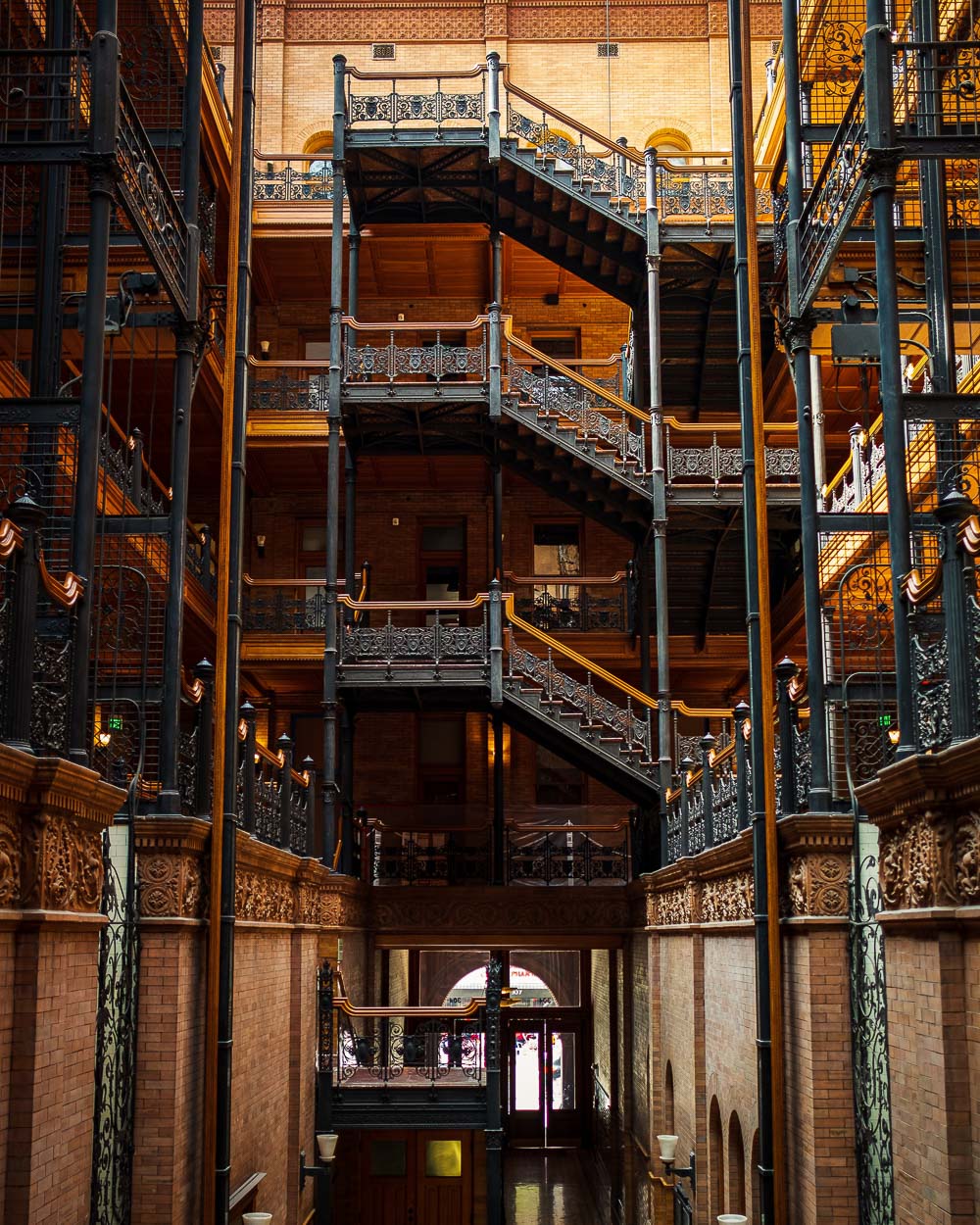
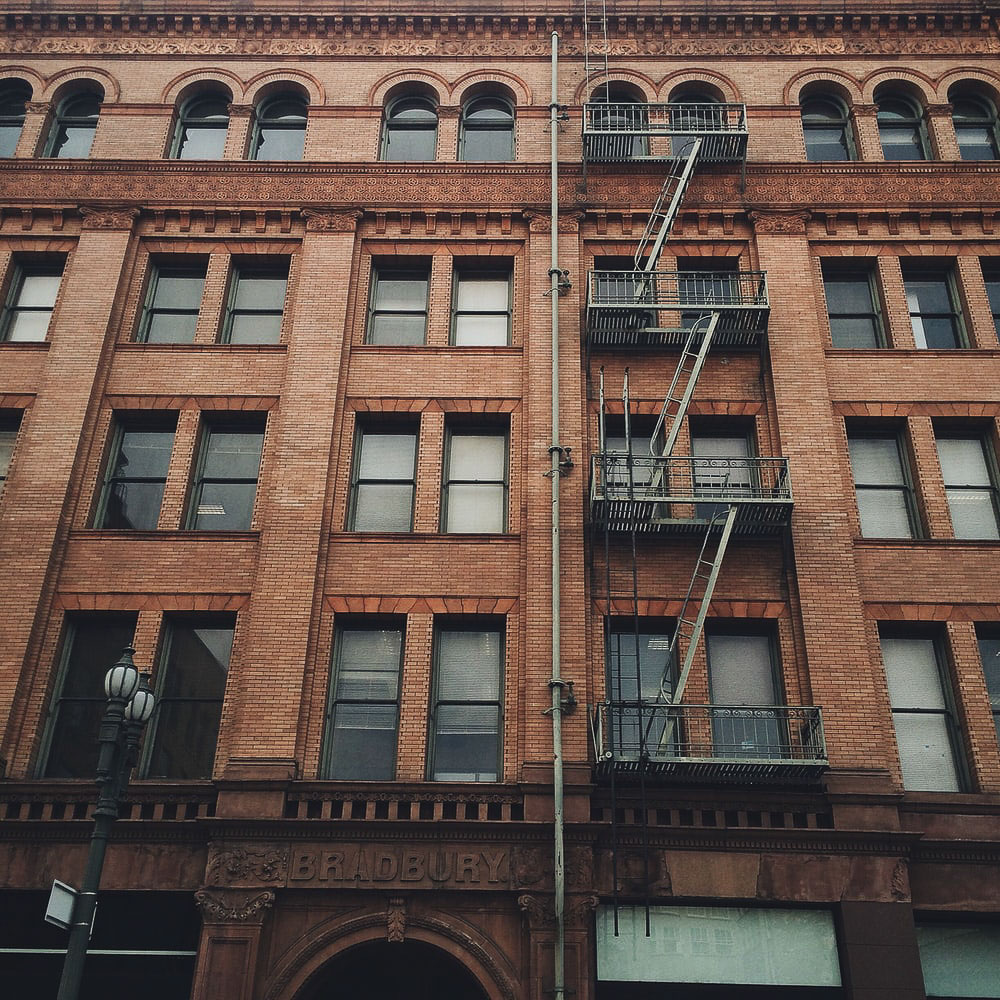
10. Vikingsholm Castle
Address: CA-89, Tahoma, CA 96142
It was quite apparent that some of the historic buildings in the American West drew their inspiration from European architectural styles. While Many Glacier Hotel adopted Swiss traditions, California’s Vikingsholm Castle favored Scandinavian architectural style.
Nestled on the shore of Lake Tahoe in Emerald Bay State Park, the 38-room historic mansion implemented the architectural vision of Mrs. Lara Josephine Knight. After the women purchased the land in 1928, she commissioned her nephew, Lennart Palme, a Swedish architect, to design her dream home. The stunning structure, which later became one of the epic historic buildings in the West, was completed a year later. Mrs. Knight and her guests enjoyed the stunning summer house for the next fifteen years.
After the death of its owner, the structure changed hands a few times. In 1953, the State of California acquired the property for half of its price ($125,000). Today, Vikingsholm Castle is a part of the Harvey West Unit of the Emerald Bay State Park. (Harvey West was the last private owner of the estate.) One of the most stunning historic buildings in the west of the U.S., the mansion is open for tours during the summer months.
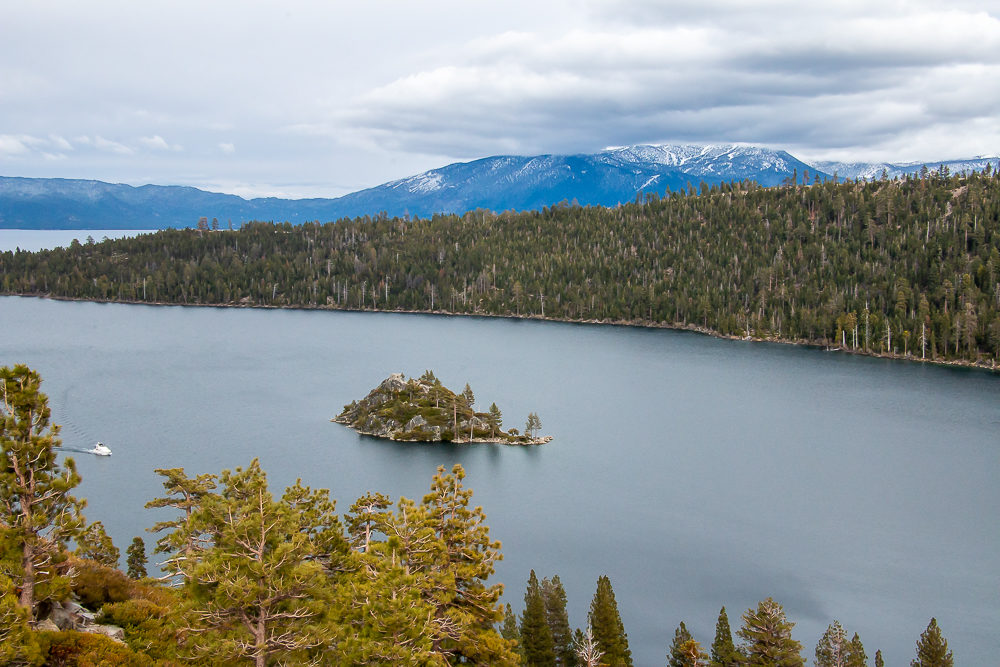
HISTORIC BUILDINGS IN THE AMERICAN WEST: ARIZONA
11. Montezuma Castle National Monument
Address: Montezuma Castle Rd, Camp Verde, AZ
Not exactly a complex of historic buildings, Montezuma Castle is yet one of the greatest examples of the centuries-old constructions in the American West. Nestled into a towering limestone cliff, the ancient dwelling narrates about the Sinagua people, a pre-Columbian culture, and other indigenous people of the southwestern U.S.
The cliff complex dates back between approximately 1100 and 1425 AD. It served as a shelter and center of gatherings and political meetings for an ancient tribe. According to some sources, the structure included 20 rooms. Others insist that the indigenous people lived in 45 to 60 rooms of the “castle”. Most of these researchers, however, agree on one thing: it took three centuries to build the ancient cliff-dwelling.
The historic recognition came to the place on December 8, 1906 when Montezuma Castle National Monument was established. At the time, it was the third National Monument dedicated to preserving Native American culture.
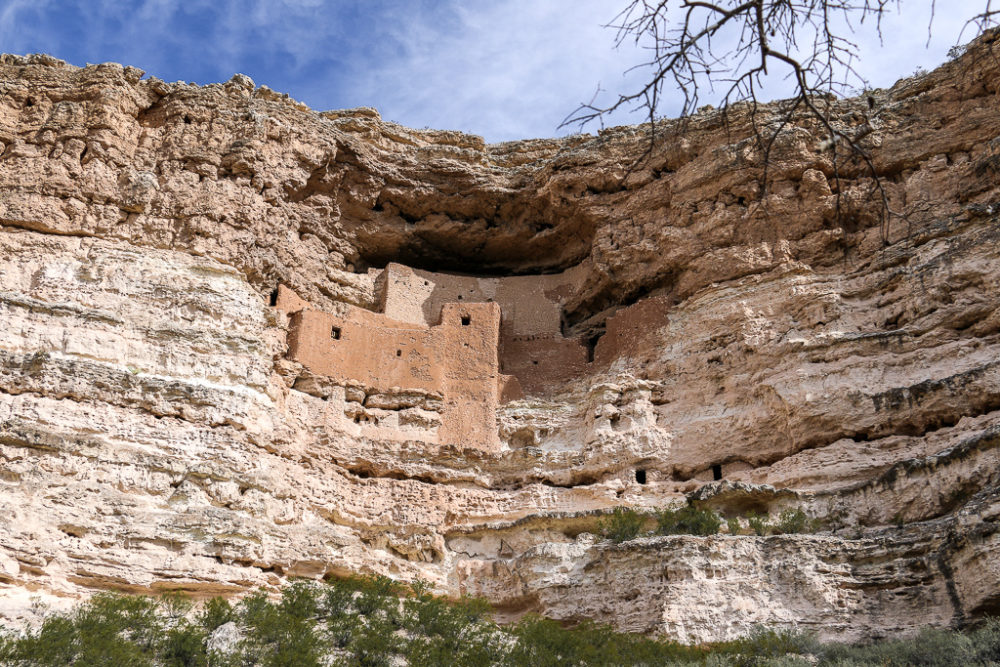
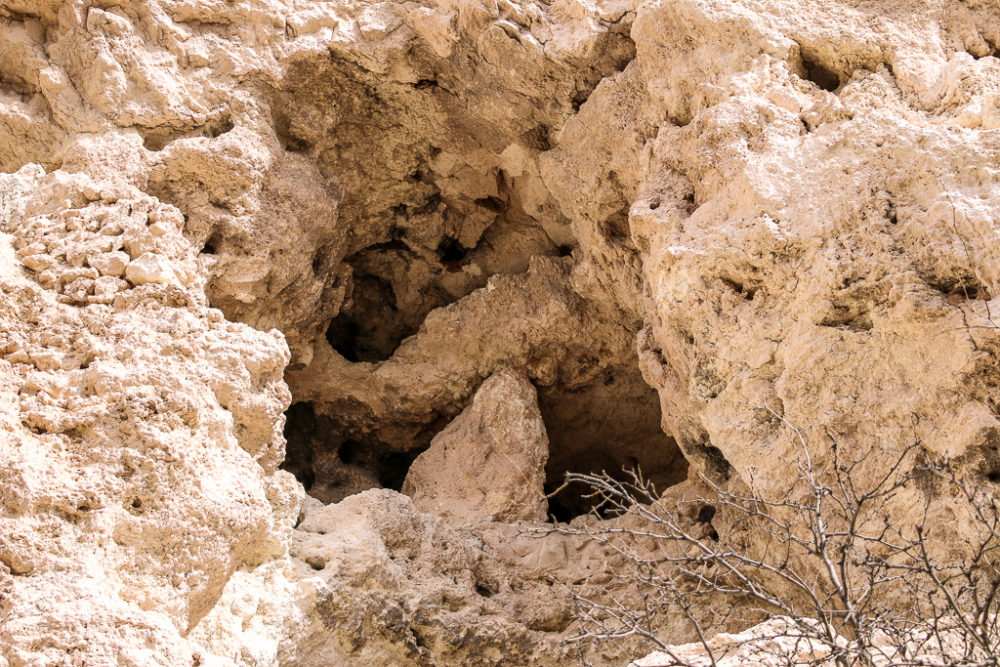
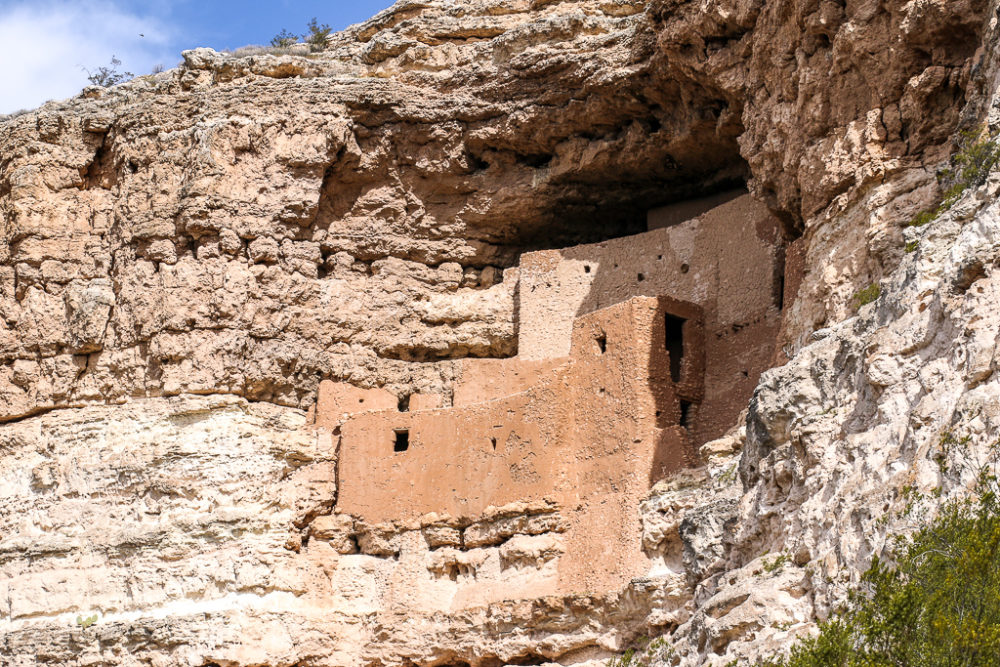
HISTORIC BUILDINGS IN THE AMERICAN WEST: UTAH
12. The Lodge at Bryce Canyon
Address: Bryce Canyon National Park, UT 84764
Another lodge and another remarkable example of the historic buildings in the American West. The Lodge in Bryce Canyon National Park earned its right to be a National Historic Landmark on May 28, 1987 under the name “Bryce Canyon Lodge and Deluxe Cabins”. Less than a decade later, in 1995, it became a part of the Bryce Canyon Lodge Historic District.
The massive structure was designed by the master of National Park Service rustic architecture, Gilbert Stanley Underwood. It took two years (1924 and 1925) to finish the construction of the two-story historic building, famous for its large porch at the north entrance.
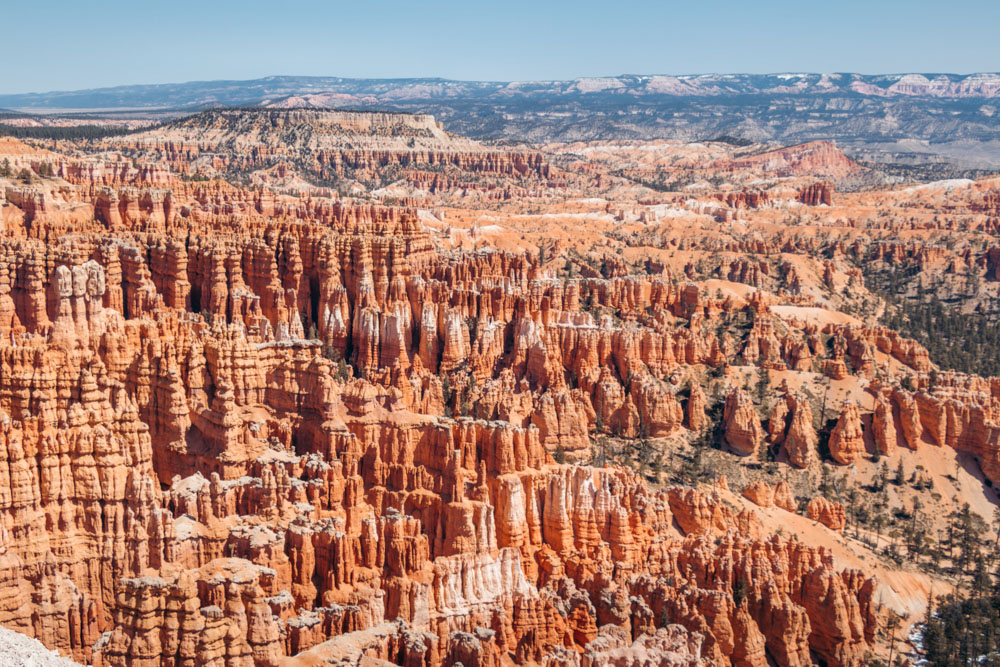
Final Thoughts
The American West can hardly boast an excessive amount of the centuries-old historic buildings. Nevertheless, this vast area gracefully carries its legacy and preserves its architectural landmarks to share with the next generations. The historic buildings in the American West might be numbered. Yes, they never fail to inspire and tell captivating stories about the people and norms that dominated this part of the county in bygone days.
Read More
- HISTORIC TOWN IN CALIFORNIA: Visit Pioneertown: Everything You Need to Know
